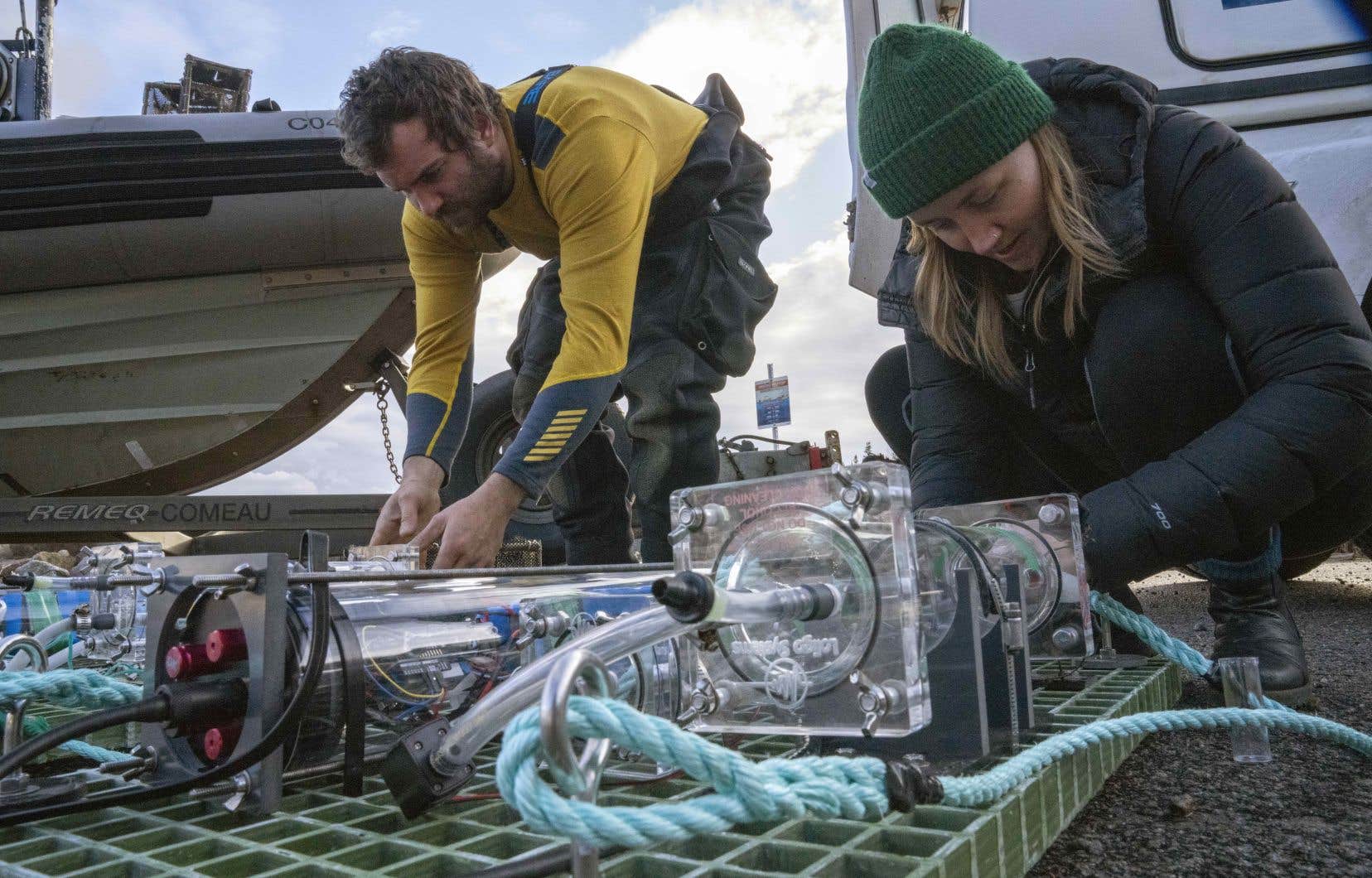This text is part of the special Higher Education notebook
Measuring the oxygen expenditure of fish to better manage species: this is the project of the Institute of Marine Sciences of Rimouski (ISMER-UQAR). The establishment recently received nearly $124,000 from the Canada Foundation for Innovation (CFI) to develop a world-class research laboratory in the bioenergetics of aquatic organisms.
The work carried out by David Deslauriers will also serve to protect the ecosystem in general. “It’s unique in the world. He is creating high-level expertise. And this will allow us to develop ISMER and attract the best students,” rejoices Guillaume St-Onge, director of ISMER-UQAR.
The money will be spent to purchase various equipment necessary for the research of Mr. Deslauriers, who is professor of fish ecology and physiology at ISMER-UQAR. In his laboratory, he calculates the energy that different species consume in food and that used to transform it when they grow, move or reproduce. “We have different approaches and one of them is respirometry. The fish are placed in sealed tubes, which have no liquid exchange. They are submerged in water,” he describes.
A probe then makes it possible to measure the oxygen level in the water. “The more oxygen the fish consumes, the more the concentration will be reduced. And depending on the speed of this decline, this gives us an idea of the energy necessary to meet the physiological needs of the animal,” adds the researcher.
Mr. Deslauriers is also working to collect similar information in otoliths, which are found in the inner ear of these animals. “We use them like tree trunks. If we section them, we are able to trace, for example, the temperature and quality of the water when the fish was born until its death.”
Deploy research in the natural environment
The FCI grant will make it possible to study the oxygen consumption of fish directly in their natural environment. “Traditionally, this type of approach is mainly done in the laboratory under controlled conditions. But now, we are going to transpose it into the field,” says Mr. Deslauriers. The data thus collected will be “more realistic,” he believes.
His team has already started work on redfish in Escoumins, whose population is increasing in the Gulf of St. Lawrence. To do this, respirometers were installed at a depth of 30 meters. “We are in the process of understanding their energy needs to measure the impact they will have on the ecosystem,” says Mr. Deslauriers.
Last summer, the researcher also examined striped bass, to see the effects on these fish of capture before releasing them into their natural environment. “Are they able to get back into the water and recover after a long struggle or is it too hard and, even if you get back into the water, is survival good? » he asks.
Mr. Deslauriers also studies American eels and brook trout. “We are doing a lot of research on this species, which can move between salt water and fresh water. This will allow us to do tests in rivers and lakes,” he says.
Better control of ecosystems
This work is carried out with the aim of developing ecosystem models in order to demystify the use of oxygen by different species of fish. “It’s really about succeeding in understanding the effect of climate change on fish consumption directly in the field,” explains Mr. St-Onge. This is the basis of the management of commercial species, but also of those at risk.” According to the director of ISMER, Quebec is particularly struggling to develop aquaculture in a sustainable manner.
Mr. Deslauriers cites as an example the “demographic explosion” of redfish in recent years, a previously threatened species. “These fish will eat other animals like northern shrimp and will compete with other fish. And there are business challenges of that nature,” he says.
His research project will make it possible to better predict the growth of fish populations in order to ensure better management of different species. “That might give you an idea. If we opened up fishing, we would know that we could take a certain number of fish biomasses to reduce the impact of redfish on more commercial prey or on the ecosystem in general,” adds the researcher.
In the longer term, the models developed could also be extended to other animals, such as birds, marine mammals and molluscs, says Mr. St-Onge. “And that’s really all about managing endangered species.” This is the next step. »
This content was produced by the Special Publications team at Duty, relating to marketing. The writing of the Duty did not take part.
